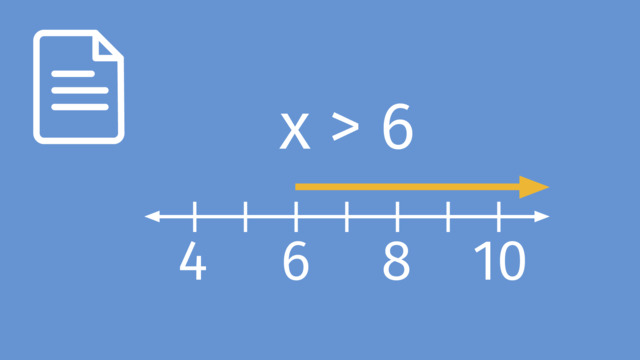Writing Inequalities
Learning text on the topic Writing Inequalities
Writing Inequalities
In the world of mathematics, we often encounter situations where things are not exactly equal. This is where inequalities come in handy. They help us express when quantities are not equal but rather greater or lesser in value. For students, understanding inequalities is like adding a new tool to your maths toolkit – one that is very important and widely used!
Writing Inequalities – Definition
Inequalities are mathematical statements that compare two values, showing that one value is greater than, less than, greater than or equal to, or less than or equal to another value. The symbols >, <, ≥ and ≤ represent these relationships.
Just like how a scale tilts to show which side is heavier, inequality symbols tell us which side has the greater number.
| Symbol | Common Words | Example |
|---|---|---|
| > | greater than | 5 > 3 (5 is greater than 3) |
| < | less than | 2 < 4 (2 is less than 4) |
| ≥ | greater than or equal to | 7 ≥ 7 (7 is greater than or equal to 7) |
| ≤ | less than or equal to | 6 ≤ 9 (6 is less than or equal to 9) |
Writing Inequalities – Example
Let’s look at the process for how to write an inequality, paying close attention to the properties of inequalities.
1.) Identify the Relationship:
- Determine whether the relationship between the items or quantities is about being "more than," "less than," "at least," or "no more than."
2.) Choose the Right Symbol:
- Use > for "greater than."
- Use < for "less than."
- Use ≥ for "greater than or equal to."
- Use ≤ for "less than or equal to."
3.) Set Up the Inequality:
- Place the variable on one side of the inequality.
- Place the known quantity or limit on the other side.
Examples:
Your friend has at least 3 pages left to read in a book.
- This suggests your friend could have 3 or more pages left.
- Write the Inequality: $ x \geq 3 $ (where $ x $ is the number of pages left)
You need to be younger than 18 to qualify for a youth discount.
- The age must be less than 18.
- Write the Inequality: $ y < 18 $ (where $ y $ is the age)
A plant grows more than 2 inches every month.
- The growth per month is more than 2 inches.
- Write the Inequality: $ g > 2 $ (where $ g $ is the growth per month in inches)
A container can hold no more than 750 millilitres of water.
- The maximum capacity is 750 millilitres.
- Write the Inequality: $ v \leq 750 $ (where $ v $ is the volume in millilitres)
Writing Inequalities – Practice
Write some inequalities to practise what you have learnt.
Writing Inequalities – Summary
Key Learnings from this Text:
- Inequalities help us compare numbers and express conditions where quantities are not equal.
- The symbols >, <, ≥, and ≤ are used to represent different types of inequalities.
- Inequalities can be manipulated by adding or subtracting the same amount from both sides, much like we do with equations.
- They have practical applications in real life, such as budgeting money or managing time.
Explore more about inequalities and practise with interactive problems on our learning platform to strengthen your maths skills!
 Do you want to learn faster and more easily?
Do you want to learn faster and more easily?











